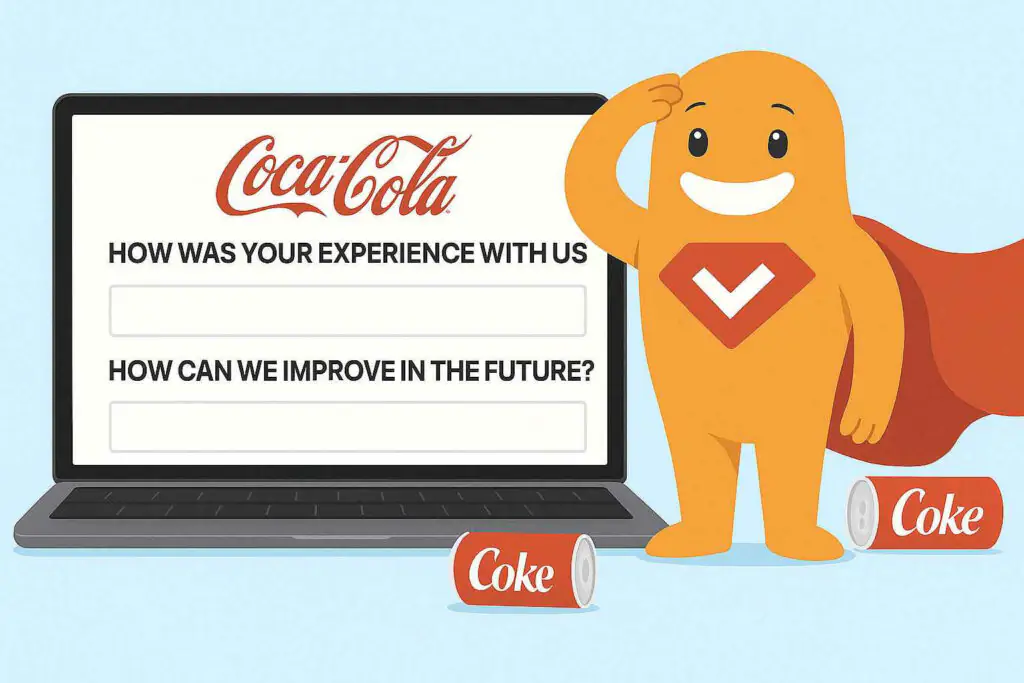Have you ever created a survey with questions designed to subtly nudge a recipient in one direction or another? Or, have you ever taken a survey and felt boxed in by one of the questions? Chances are, you were crafting, or responding to, a leading question. In this blog, we’ll look at five types of leading questions with examples, why you should avoid them on surveys, and how they’re different from loaded questions.
Create your survey, poll, or questionnaire now!
What is a Leading Question?
A leading question does just what it says: It “leads” respondents toward the answer the survey-taker wants them to choose. For example, if a company wants a prospective client to sign a contract, a question may ask, “When would you like to get started?” This question doesn’t ask them if they want to get started, but prompts them to state when they will get started. It presupposes that they want to come on board. While this can be beneficial for the company, it puts the client in an unfair position.
5 Types of Leading Questions with Examples
Assumption-based Leading Questions
These types of questions operate on preconceived notions that the survey creator holds. Feedback surveys commonly use them when a researcher wants to evaluate respondents’ feedback regarding a product, service, or process. Of course, they can apply to other types of surveys as well. For example, a question may ask, “How much did you enjoy our services?” This question assumes that the respondent enjoyed the services provided, and only asks to what level of enjoyment they received. It does not allow them to state that they did not enjoy the services.
Other examples of questions that are based on assumptions:
- How satisfied are you with our product?
- Which of our product features did you find most useful?
- How bad do you think the President’s new policies are?
Leading Questions with Interconnected Statements
This type of question combines two closely related statements. Often, it will begin with a statement designed to put bias into a respondents’ head, and then follow up with a question hoping that they will agree with the aforementioned statement. Leading questions with interconnected statements are often used in employee feedback surveys designed to create new policies, and the survey creator wants to sway the decision in one way or another. For example, say a company wants to get rid of its work from home policy. A leading question with interconnected statements may be, “Many employees like coming to the office versus working from home. What do you think about this?” As you can see, the statement aims to persuade the employee to agree with it by highlighting how others feel first before posing the question.
Other examples of questions with interconnected statements:
- Many employees dislike wearing masks to work. How do you feel about this?
- Most students think virtual learning isn’t working. Do you agree?
- A lot of Americans support stricter gun laws. Do you feel the same way?
Direct Implication Leading Questions
This type of leading question is designed to get respondents to consider results that would eventually happen if something else happens. In other words, they ask respondents to consider the results of their possible reaction to something. These types of questions are often used for experienced-based surveys. For example, a restaurant may ask, “If you liked your meal, would you come back again soon?” As you can see, it asks them a question based on an implication (that they will like their meal).
Other examples of direct implication questions:
- If you found this conference beneficial, would you return next year?
- Do you think if you feel our services are top-notch, you contact us again?
- If you enjoyed this movie, would you recommend it to friends?
Scale-based Leading Questions
This type of question is leading because it uses an unfairly marked scale to tip it in the researcher’s favor. So, the scale is weighted with the positive responses outnumbering the negatives. By providing more options on the satisfied side, the question is biased and leads participants in that direction. Scale-based leading questions can appear on just about any type of survey.
An example of a scale-based question with more positives than negatives would be:
- How satisfied were you with our services?
- Extremely satisfied
- Satisfied
- Somewhat satisfied
- Somewhat dissatisfied
- Dissatisfied
Coercive Leading Questions
This type of question forces respondents to provide a specific answer, usually in the affirmative. Unlike other types of leading questions that are subtle, coercive leading questions are aggressive. This type of leading question can often be found in customer satisfaction surveys and website evaluation surveys and is a huge source of survey bias. These questions, also referred to as leading questions with tags due to their structure, pose a statement and then a question (often with a negative element, such as “won’t you?”).
Examples of coercive questions:
- Our product satisfactorily met your needs, didn’t it?
- You’ll get vaccinated when the time comes, won’t you?
- You’ll highlight your positive experience on social media, right?
Why You Should Avoid Leading Questions on Surveys
Some researchers and survey creators unintentionally use leading questions; hopefully, this helps you to better understand their characteristics so you can avoid them on your surveys. Of course, some people use these questions intentionally, arguing that they are beneficial because they are:
- Focused. They help to suit the immediate objectives of their survey.
- Efficient. They help achieve predetermined responses, simplifying data analysis.
- Specific. They help avoid vague and ambiguous questioning.
While this may be true, leading questions are a big source of survey bias. By trying to achieve predetermined results, framing questions in a way that evades neutrality and cajoles the respondent into an answer that may not be entirely true, the survey results become skewed. This means the survey, while it may say what you want it to say, is not valid. In addition, leading questions often lead to false feedback. What is the purpose of soliciting feedback, if you can’t learn and improve from it? Gathering untrue impressions will, in the long run, hurt the organization, not help it.
Leading vs Loaded Questions
There is a distinct difference between leading questions and loaded questions. While a leading question prompts someone toward an answer, a loaded question is a trick question. No matter how a respondent answers, they’re saying something that they may not agree with. You can see in these examples how loaded questions are different from leading questions:
Examples of loaded questions:
- Will you continue to support our amazing company?
- Even if the respondent replied “no,” they’re still stating that the company is amazing.
- Do you think this criminal should be convicted?
- Again, even if the respondent replies “no,” they’re still stating the person is a criminal.
- Have you stopped abusing your dog?
- If the respondent says “no,” they’re stating they still abuse their dog; if they say “yes,” they’re stating that they used to. So, if the respondent never has abused their dog, it’s a lose-lose scenario.
- Are you naive enough to believe the mainstream media, or do you just not care about the truth?
- This loaded question is framed in a way that if the respondent disagrees with one of the two included clauses, it inadvertently suggests that they agree with the other one. It’s loaded because it assumes that these are the only two reasons why a person might believe the mainstream media (they’re naive or they don’t care about the truth).
For more examples of loaded questions, we suggest checking out Effectiviology.
Conclusion
Leading questions are intentionally or unintentionally framed queries that prompt a respondent to answer in a particular way. So, while these types of questions may result in respondents answering in the way the survey creator had hoped, it results in survey bias which impacts the validity of the survey. Therefore, you should avoid them in order to conduct a clean and accurate survey. Armed with this information, are you ready to create your next survey, free from leading (and loaded) questions? Start now with SurveyLegend! Our surveys beautifully render, are highly secure, and completely responsive. And, it’s free to start, sign up today!
Have you used leading questions on surveys in the past? Did they skew your data? Do you have any other great examples of leading questions? Let us know in the comments!
Create your survey, poll, or questionnaire now!
Frequently Asked Questions (FAQs)
What is a leading question?
A leading question may be intentional or unintentional on the part of the survey creator. Ultimately, it results in prompting the respondent to answer in one way or another, often to the benefit of the person performing the survey.
What is a loaded question?
Unlike a leading question that persuades someone to answer one way or another, a loaded question is a “trick question” in which no matter the way someone responds, they’re siding with the person asking the question or incriminating themselves.
What are the five types of leading questions?
Assumption-based, interconnected statement, direct implication, scale-based, or coercive.
Are leading questions considered bad?
Yes. Leading questions introduce bias into surveys, often resulting in inaccurate responses which skew data and lead to an invalid survey.





